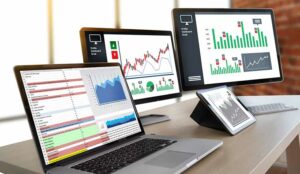Many of the early debates surrounding analytics such as phonetic indexing versus speech-to-text, high cost of ownership, accuracy and effectiveness, have diminished thanks to the increasingly reliable solutions which are now available and working and subsequently driving UK adoption of the technology.
With reliability has come flexibility in terms of the deployment of analytics solutions. There is the option to implement on a hosted or on-demand basis using a financially dynamic pay-as-you-go model, or for those organisations who still wish to own the asset, the CPE (Customer Premise Equipment) model provides an appealing alternative.
The real shift in dynamics, however, has resulted from the understanding that ROI from these applications has been historically difficult to prove. Enter the emergence of low-cost proof-of-concept packages. Suppliers have identified that with emerging technologies there needs to be a level of comfort, with some of the risk removed, and they have been actively promoting short-term pilots. This has enabled organisations to capture enough information to qualify some of the assumptions they have made on the ROI they want to achieve and build the business case for further funding and roll-out of the programme.
Identifying the need for speech analytics
Taking a step back, how do you qualify if there is a need for speech analytics within your contact centre? Think firstly about knowledge gaps within your organisation:
- Do you know why your customers are calling? (caller intent)
- What are your agents and customers doing? (key behaviours)
- What most impacts your relationship with your customers? (customer sentiment)
Analysis of speech and conversation will not only help answer the questions above, it will improve operational efficiency and enhance customer experience, while improving bottom-line contribution.
Cutting expenditure without diminishing service
In today’s economic climate there is even more pressure to cut operating expenses but without diminishing customer service levels. Speech analytics tools support these initiatives by identifying how a company can:
- Reduce call volume and talk time
- Identify and streamline inefficient processes
- Reduce repeat calls and unnecessary transfers
The technology can’t work in isolation
Before going any further it is key to point out at this stage that the technology on its own is not a guarantee of success, it is the people and the processes you put around it which will determine the results. The application will ensure you have the ability to extract and disseminate data quickly but it also needs to be summarised, consolidated and presented in a way that makes sense to the business.
This is where the real value lies in working with an analytics consultant who can marry their analytics skills with the knowledge the business has, to ensure that a deployment is not only effective but it continues to remain effective beyond the shelf-life of a trial or pilot.
With the right consultation clear goals impacting service and sales can be identified and measured and a proper systems payback outlined with given timescales.
Harnessing analytics to drive customer service
First-call resolution
Analytics tools implemented in the right way can give an organisation significant competitive advantage in terms of their service offering. The most obvious that springs to mind is improving first-call resolution. By automatically analysing every captured interaction and presenting complex results in an easy-to-understand manner, patterns can be quickly identified and the root causes behind customer dissatisfaction exposed.
See also First Call Resolution using Speech Analytics
Average handling times
Average handling times is another key area which analytics can assist with by driving down unnecessary repeat calls through the identification and removal of problem processes. Coupled with the ability to identify agents who perform exceptionally well, this keeps handling times down whilst ensuring the customer is satisfied with the result, ensuring that best practice can permeate throughout the enterprise.
Identification of caller intent
The ability to understand and break down the primary reasons why your customer is calling you and subsequently to optimise your call handling processes to suit caller intent can dramatically impact your service capability.
Reduction of non-speech in calls
Speech analytics tools can take unstructured data and turn it into searchable content, so even the presence of silence in a call is searchable and measurable. By reviewing the percentage of non-speech in calls over a period of time and analysing whether a specific group of individuals accounts for this more than others, those individuals can be targeted with meeting specific reductions over a given period of time.
Quality monitoring optimisation
While speech analytics has an important role to play in identifying the level of service being achieved by measuring some of the areas above, it can go that step further by integrating with coaching packages to identify which agents need to up-skill in a certain area, for example, to reduce non-speech or call-handling times.
Harnessing analytics to drive sales
Revenue optimisation
By searching for keywords inside calls an organisation can extrapolate information from call recordings. For example, the marketing team can analyse market responses to particular products by searching across all calls where certain product names are mentioned. Campaigns can then subsequently be amended to optimise revenue.
Customer retention and churn risk predictions
Various speech analytic packages have the capability to identify customers at risk of defecting in near real time by predicting whether a customer’s dissatisfaction will lead to churn. By analysing the interaction using emotion detection, content analysis by keywords and phrases, call flow analysis and talk pattern analysis, relevant indicators can be programmed to detect and alert when a customer is at high risk of leaving.
Sales effectiveness
By searching across all interactions and identifying the successful calls which led to closed business, best practice can be employed by identifying why that call was successful and determining any patterns which successful calls may have in common. This can then be shared across the business and suitable coaching programmes put in place to boost sales effectiveness.
Up-sell and cross-sell effectiveness
Speech analytics can be used to determine the volume and effectiveness of cross-selling by identifying the number of calls where a cross-sale was attempted. Following up on the results achieved, there is then the opportunity to deliver appropriate training whilst measuring the effect on customer experience and take-up of the offer.
Improvement of billings and payment collections
Speech analytics can be used to identify whether agents are asking the right questions and encouraging customers to pay by phone at that moment rather than relying on them to do so via the web or to call back at a later date. By identifying those calls where conversions are made, patterns in circumstances leading up to a customer being willing to commit can be emulated across other agents’ calls, with a resulting increase in revenue being captured.
Case study
This case study shows what speech analytics can achieve.
One customer wanted to understand how speech analytics could improve their average handle time by driving down repeat calls, and identifying and removing problem processes, without the cost of having to listen to all their calls.
Over the period of one week over 32,000 calls were indexed, equating to over 1,600 hours of call audio. This was made searchable in 15 hours and 8 specific queries were developed which equated to 72 resource months of analysis.
Insights gained included the average non-speech time equating to 68 seconds per call. The advisors most responsible were identified and key reasons for call silence ascertained. The outcome was a 5% monthly reduction in non-speech stored customer service calls.
Advisors with the longest talk time accounted for 3% of calls and were targeted with a monthly reduction of 10%. This led to a reduction of 8,123 minutes per month. Collectively, when each area was measured and addressed a total monthly reduction in call times of 1,528 hours was achieved and over the course of the year this was the equivalent of 34 full-time employees. Over the period of one year, and just focusing on this element of the business alone, this pilot demonstrated how a company could achieve costs savings in the region of £694,000, which more than paid for the initial investment in the system.
Next step
There is an increasing need not just for call centres to deliver the improved customer experience, cost reduction and optimised agent performance which are the expected internal business drivers, but to meet the wider organisational needs of their C-Level executives across the board in Marketing, Operations, Customer Services and Finance.
Many more people now see the key touch point of the call centre as a revenue generating asset with a vast store of customer insight data that needs to be accessed, understood and acted upon.
Related reading
- Typical uses for Speech Analytics
- Speech Analytics In Marketing
- Speech Analytics in Debt Collection
- First Call Resolution using Speech Analytics
- Using speech analytics to assess language proficiency
- Choosing a Speech Analytics Solution
- Recording Customer Surveys
Contributors
David Mason of Business Systems
Author: Jonty Pearce
Published On: 14th Mar 2010 - Last modified: 4th Jan 2023
Read more about - Technology, Business Systems, Speech Analytics















